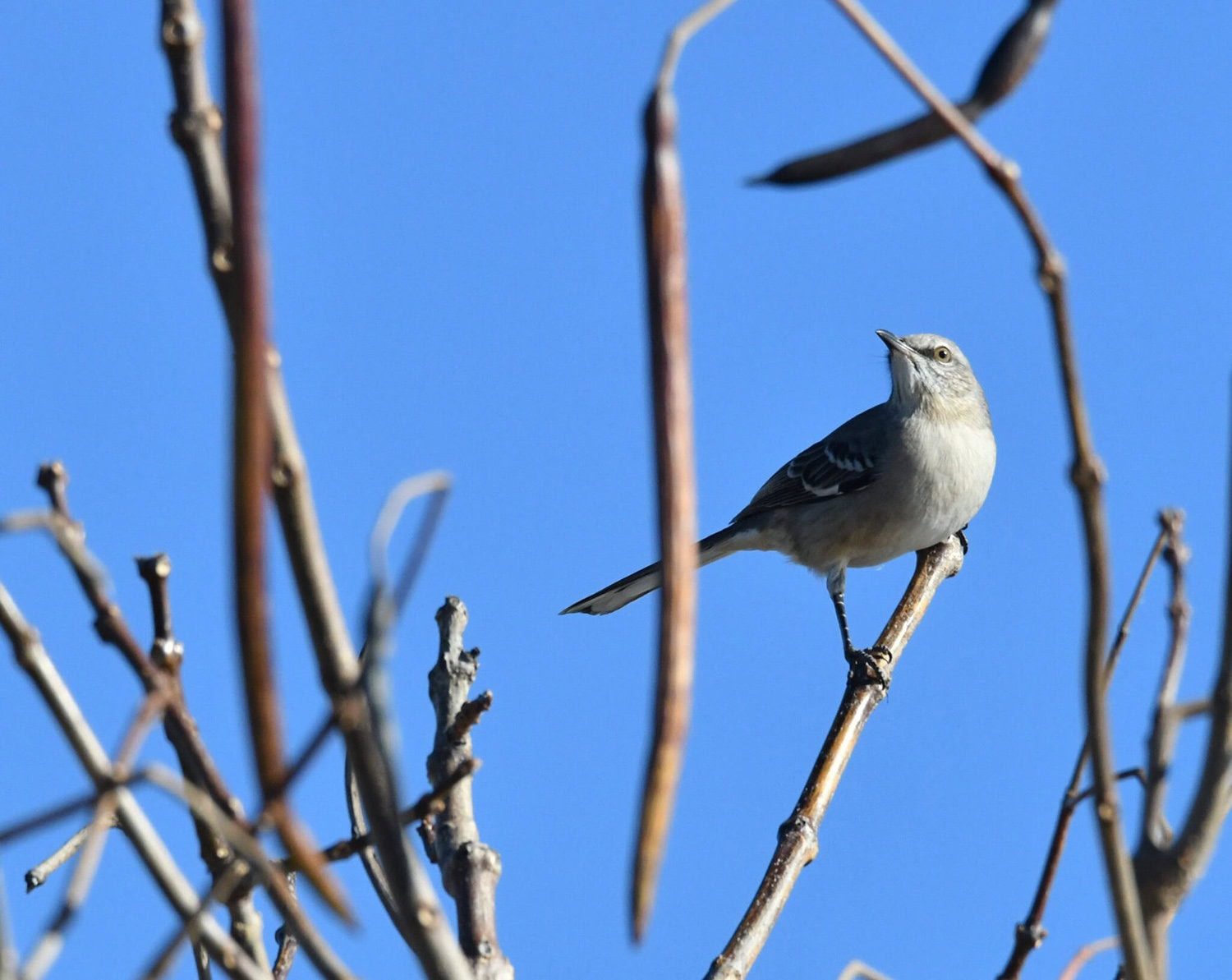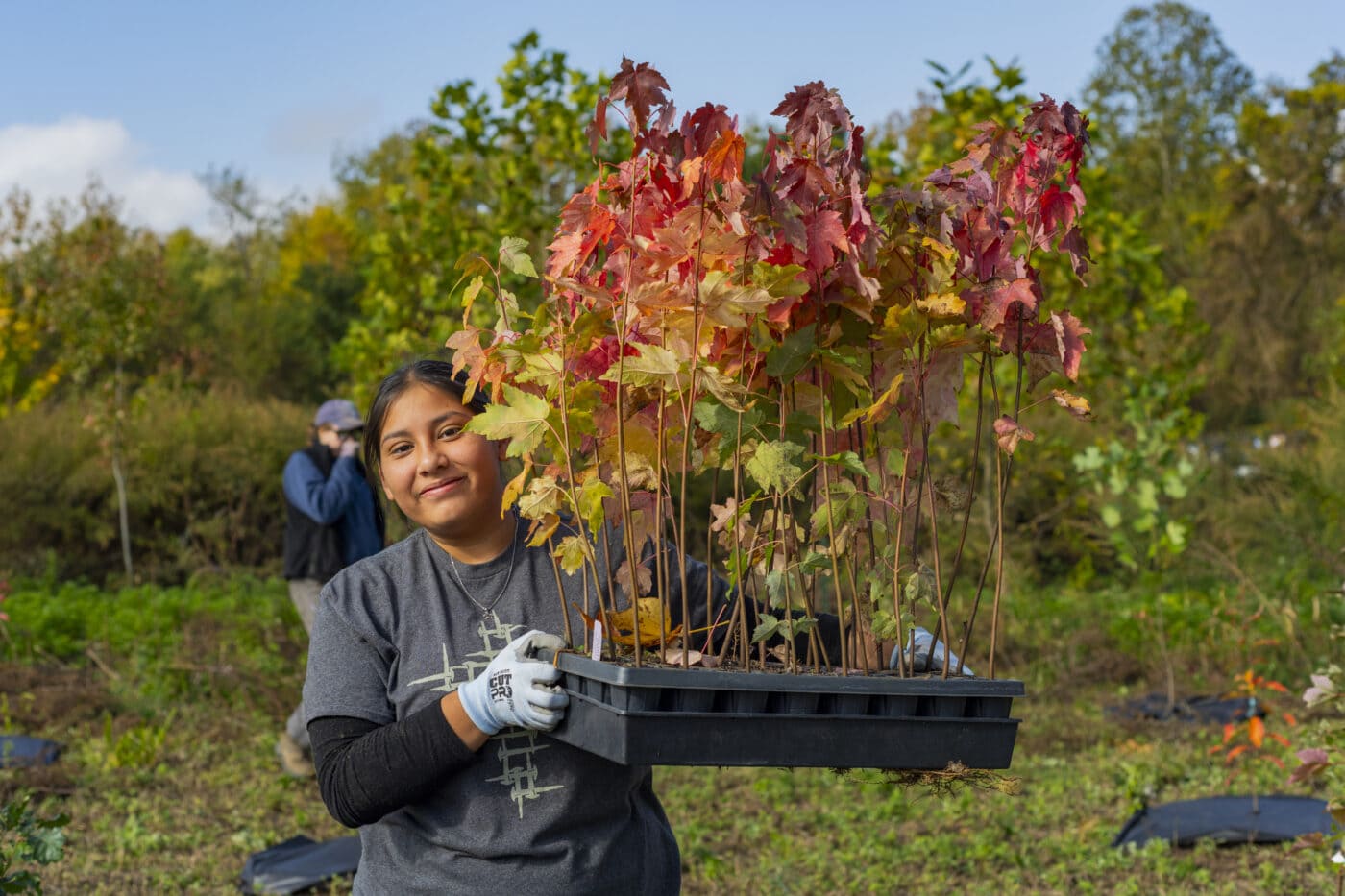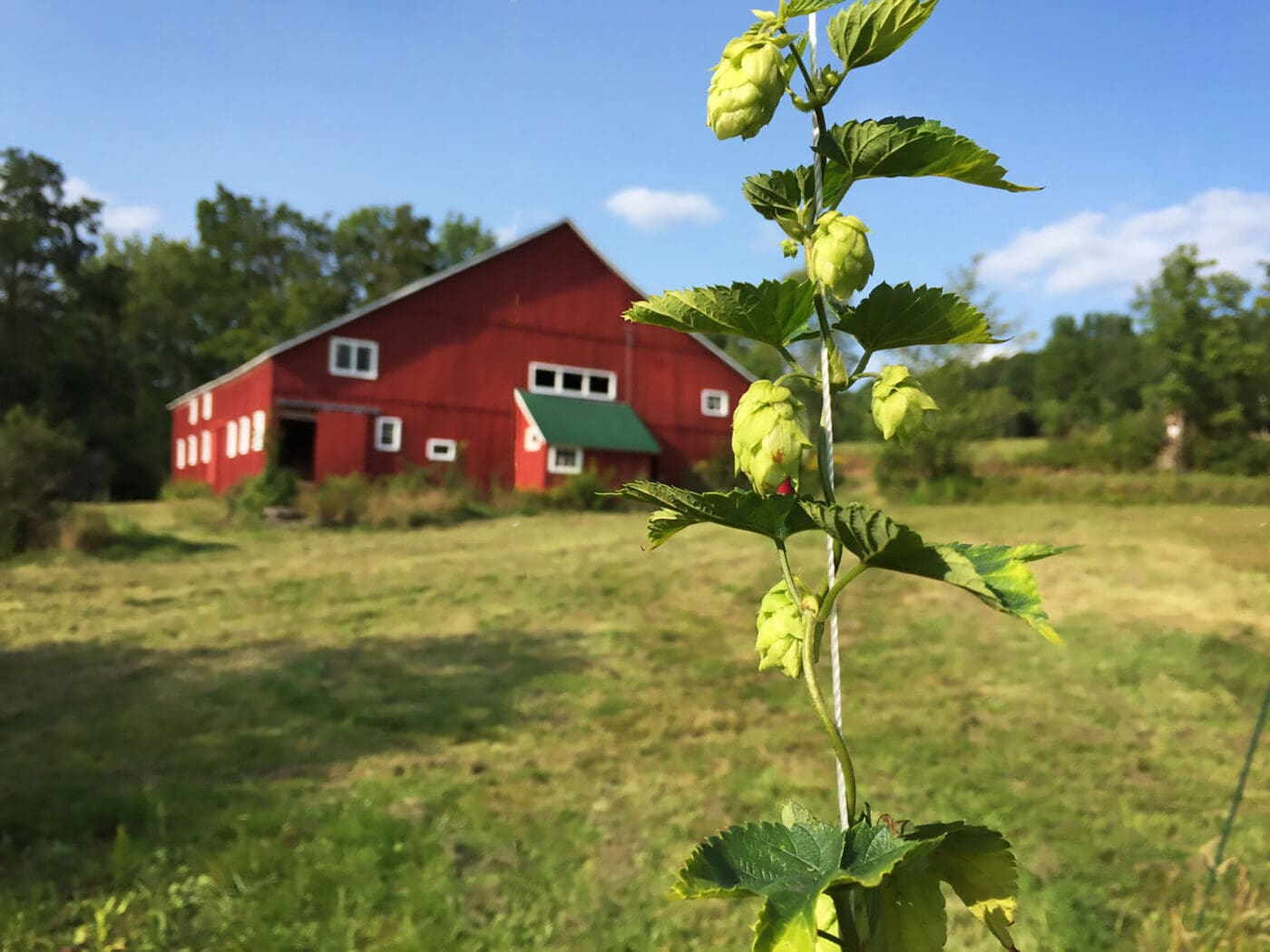Of the 40 species of sparrows in the United States, about half of them can be found in New York, either as year-round residents or migrating species that move through our area in spring and fall.
Ranging from drab brown to buff grey, with black, rust brown, and the occasional yellow or orange accents, sparrows are not birds that stand out. Even birders tend to ignore these tiny songbirds, dismissing them as LBBs (little brown birds), in part because they’re so abundant. They’re also notoriously difficult to identify.
European natives and “New World” sparrows
My own relationship to sparrows is nuanced — I find I have completely different relationships with and reactions to different types. I can claim the house sparrow as one of the first birds I identified when I started birding eight years ago. These little survivors are ubiquitous, having lived alongside humans for thousands of years. They adapt as we adapt, eating the bugs that attack our crops and gardens, but also eating those very same crops.
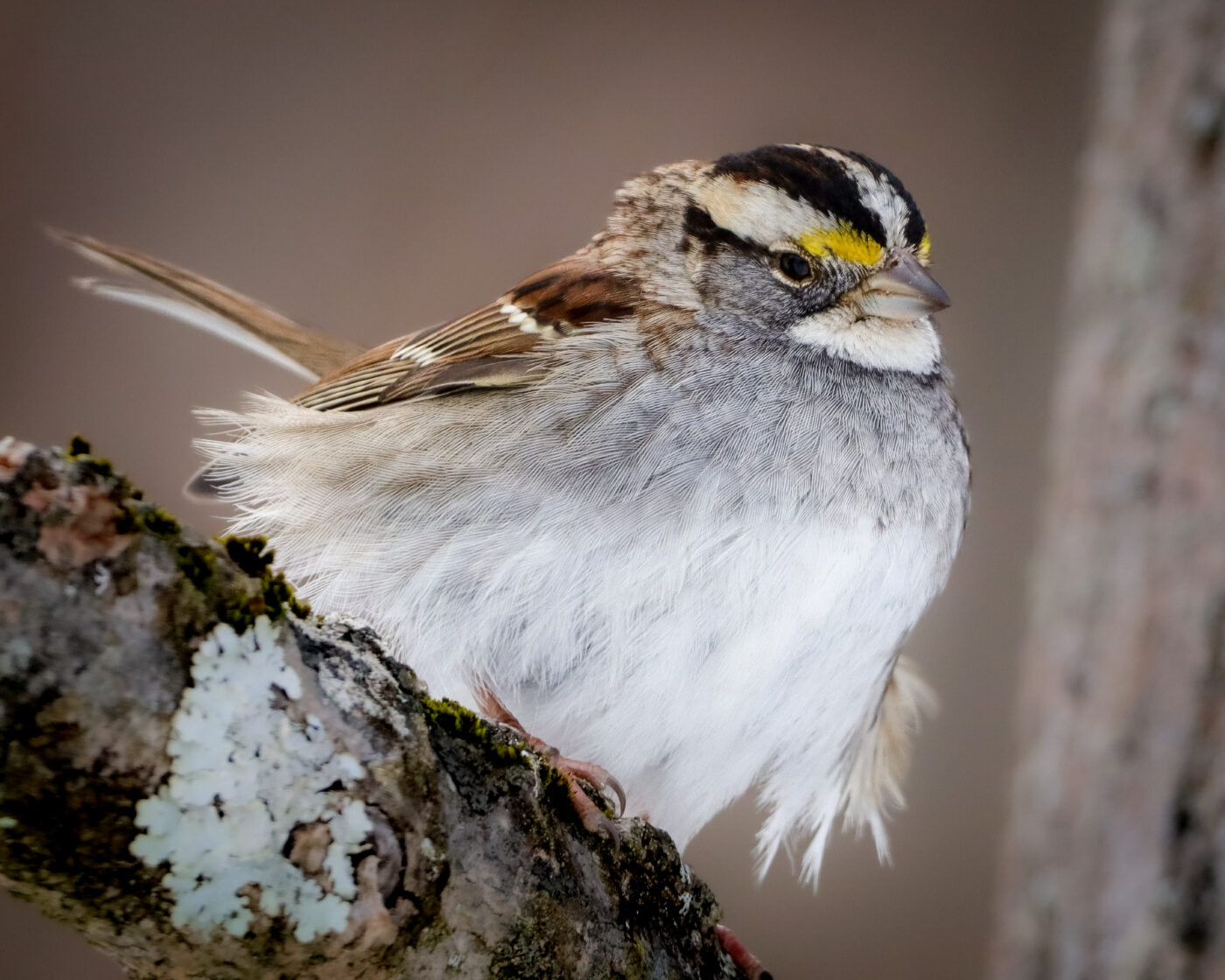
House sparrows are native to most of Europe, Asia, and parts of North Africa. They are Old World sparrows. Brought to America in 1851 to protect farmland from pests, they spread rapidly across the continent. They thrive pretty much anywhere humans thrive. I identified my first house sparrow with its mottled brown feathers and black goatee while parked at a thruway rest stop.
It was perched on a fence post, completely unfazed by the cacophony of human activity around it. I didn’t mind the bird back then, but now I’m not a fan of house sparrows, who drive the native bluebirds from my yard and devour my birdseed like it’s going out of style.
New World sparrows — those birds native to the U.S. — are among some of my favorite birds. These passerines, or perching birds, tend to stay away from feeders, so it’s helpful to understand habitat and food preferences if you want to spot them. Here’s a handy guide to that.
Sparrow song and other treasures
It’s incredibly useful to learn how to identify sparrows by their song, since (admittedly) they tend to look a bit interchangeable. A great resource for this is the Merlin Bird ID app run by Cornell Lab or Cornell Lab’s All About Birds website.
White-throated sparrows are, perhaps, my favorite backyard sparrow. They have some clear identifiers including a strip of yellow above each eye and a patch of pure white feathers at their throat. Their bodies are a mix of brown, black and white. They have an incredibly beautiful and unique song — a high-pitched, multi-note serenade — with nine distinctive note types and 15 patterns. Though they’re year-round residents of New York, I typically see them at my feeders as soon as the weather begins to turn cooler in September. They hang around my yard all winter long, and I don’t mind this one bit.
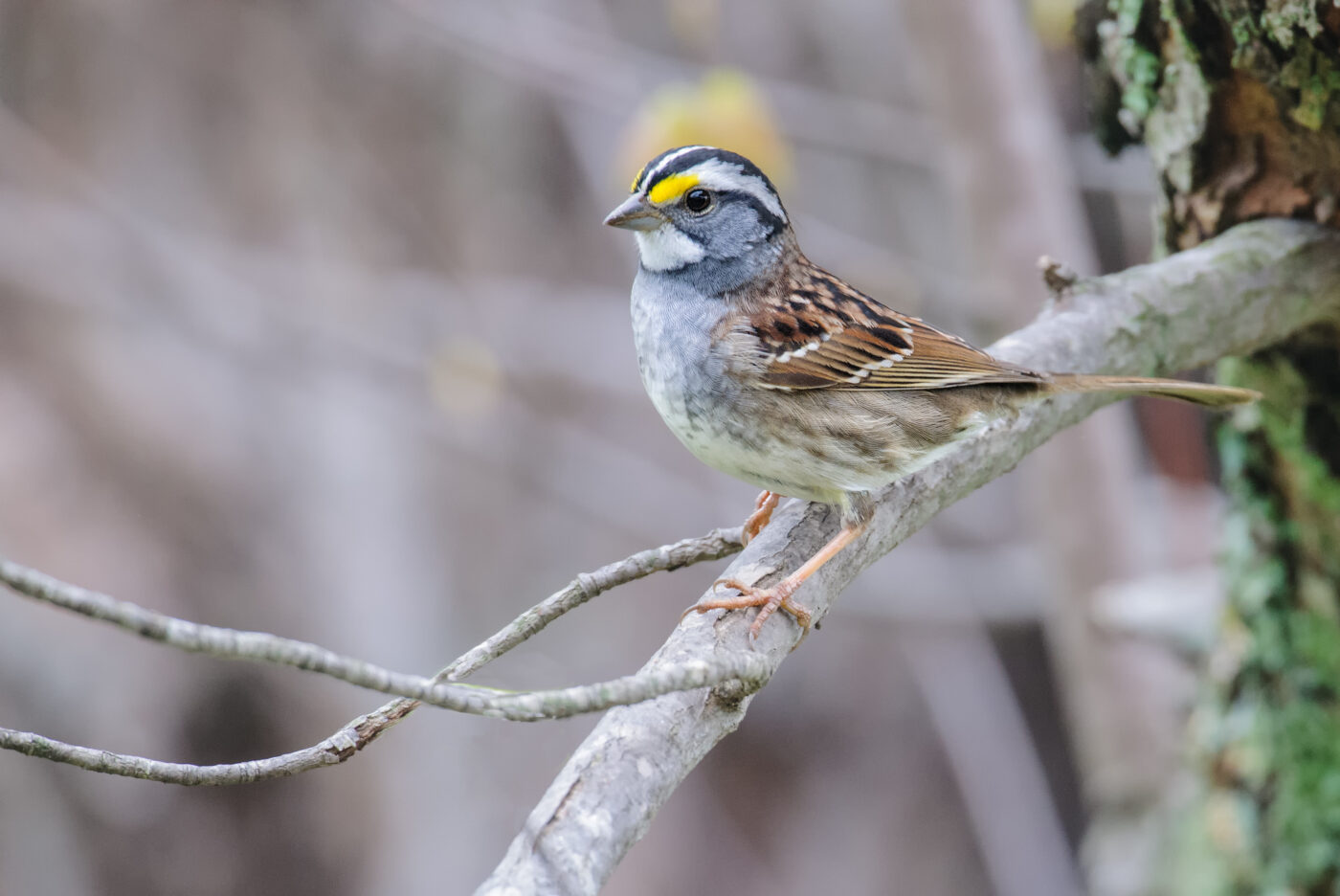
Chipping sparrows are small, even for sparrows, with a slender body and long tail. They’re pretty unremarkable, as far as sparrows go, except for a distinctive reddish cap and a “chipping” trill that’s quite lovely. These features make them easy to identify once you learn to spot them. I often see them in my yard, hopping around beneath my feeders to pick up fallen seed in the grass. They are considered a “breeding visitor” in New York, and are most commonly seen throughout spring and summer.
Song sparrows, the ultimate LBBs, are easy to miss when you’re looking for brighter, more distinctive birds. These streaky brown sparrows have a telltale spot of brown smack in the middle of their chest. They’re year-round New Yorkers, though I rarely see them at my feeders. They have a “loud, clanking song of 2-6 phrases”, as described by All About Birds. The song has a metallic quality to it, that ends in a variety of high-pitched notes. I often hear these guys before I see them.
Finding rare sparrows
Eastern towhees are the odd sparrows out when it comes to visibility and, if I’m being honest, I only recently learned they were sparrows at all. These are robin-sized sparrows with solid black heads, backs, and tails. Underneath, they are white and orange, with rufous coloring along their flanks. They can be spotted in New York year round but are migratory and thus mostly visible from April through about November. I’ve never once seen a towhee at my feeder, but I have occasionally spotted them at the edges of wooded trails in areas where there’s some type of water feature and lots of bugs.
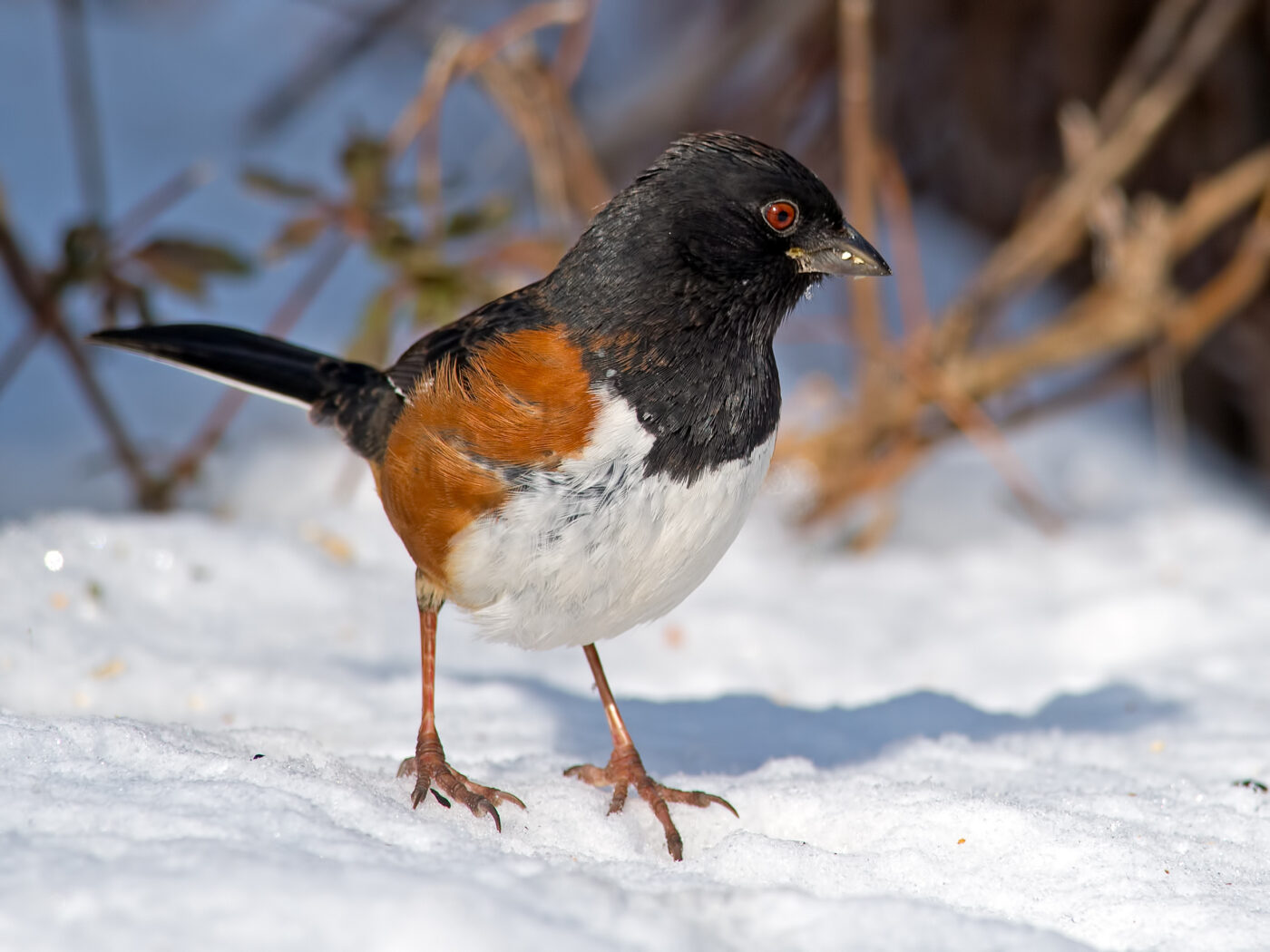
Nothing is more exciting to birders than spotting a rare sparrow and crossing it off their “life list” — the running tally we keep of different bird species we’ve seen or heard in our lifetime.
This list of the 20 species of sparrows in New York, which includes gems like Lincoln’s sparrows, fox sparrows, swamp sparrows, and Eastern towhees is a good starting point if you want to expand your sparrow repertoire.




